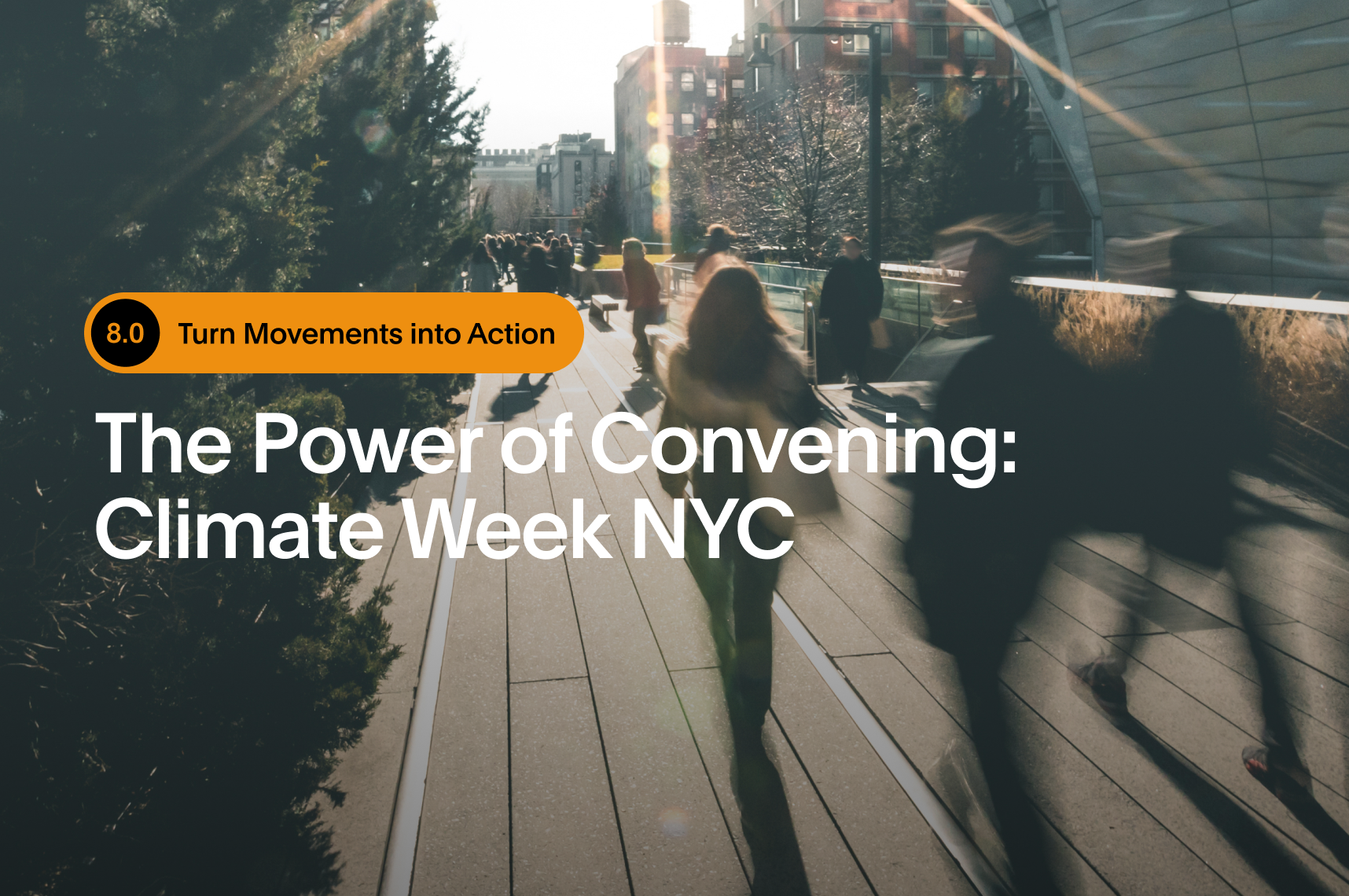For the past 14 years, in concert with the UN General Assembly, climate leaders have gathered in New York in September to showcase initiatives and paths toward the energy transition. It’s an opportunity for world leaders to work with representatives from businesses, foundations, and NGOs as they coalesce around climate goals.
As we look back at NYC Climate Week 2023, we think it’s worth asking: What does the conference actually deliver? Is there demonstrated impact from bringing together policymakers, activists, and the media to confront global climate challenges?
With the power of hindsight, Speed & Scale looked into three moments from Climate Weeks’ past to evaluate progress to date:
Some efforts are truly impactful
On the first day of Climate Week 2014, a non-profit global initiative called RE100 was launched with the goal of bringing together companies and businesses committed to 100% green energy. Since 2014, an initiative that began with a few dozen companies has grown to 418 members, ranging from tech leaders at Meta and Apple to retail giants Nike and American Eagle.
Nine years ago, these companies generated just 22 percent of their energy from renewable sources. Today, that number is up to 45 percent — with 61 of the companies sourcing their electricity from 100 percent renewable sources.
The initiative is advancing at an impressive scale. Altogether, the 418 participants use as much energy as the United Kingdom. The group is also working with governments and local partners to accelerate adoption of clean energy, remove barriers, and improve the policy landscape. RE100, conceived and launched at Climate Week, demonstrates the conference’s potential for (clean) power.
Big projects bring big benefits, but require time
At Climate Week 2021, Gov. Kathy Hochul and Mayor Bill de Blasio announced two significant green energy infrastructure projects to power New York City with wind, solar, and hydropower from upstate New York and Canada.
The Champlain Hudson Power Express will deliver 1,250 megawatts of hydropower from Canada, enough to power more than a million homes. Clean Path New York will deliver 3,400 megawatts of wind and solar capacity via a new transmission line. Both projects are critical to satisfying a state law that requires all electricity generated in New York to be carbon-free by 2040.
In November 2022, Gov. Hochul broke ground on the Hudson Power Express line and construction is now underway. Significant parts of Clean Path New York have been completed, including 22 wind turbines that opened in May.
The most impactful Climate Week developments may be the least expected ones
Sometimes change is generated less by planned announcements and more by the spotlight and accountability that Climate Week brings to bear. Conference forums can give us the opportunity to hear what heads of state and leaders of global institutions truly think.
At Climate Week 2022, at a live event hosted by The New York Times, then-World Bank President David Malpass would not affirm the scientific consensus that man-made carbon emissions were contributing to climate change. While many in the climate policy arena had already critiqued Malpass’s lack of commitment to climate solutions, his comments sparked immediate and widespread calls for his resignation. The global pushback prompted Malpass to step down.
Moreover, the outcry for a climate-conscious World Bank president was heard. This June, former Mastercard CEO Ajay Banga took on the job. In a first-day memo to his entire staff, Banja said: “We are at a critical moment in the arc of humanity and the planet. The World Bank Group is being asked to lead the way, to double down on development and climate efforts and to deliver even more impact and results.”
When the leadership of the World Bank, with influence over billions of dollars in global investment, shifts from climate denial to staunch advocacy, it’s a game-changer. And it happened in part because of public statements made at Climate Week.
…And what was Speed & Scale focused on at Climate Week?
We were on the ground in New York to connect with global partners who are committed to solving our climate crisis. Achieving net zero emissions by 2050 demands collective action around a plan based on clear targets. Accountability matters. We can’t manage what we can’t measure.
As the climate community gears up toward announcing progress and outcomes at COP28 in November, Speed & Scale will be updating our tracker on global climate progress. We’re expecting to see a mix of inspirational leaps, incremental advances, and disappointing regressions. Still, we believe in transparency and will present it all with the goal of moving urgently toward a cleaner and healthier future.
Stay tuned.


